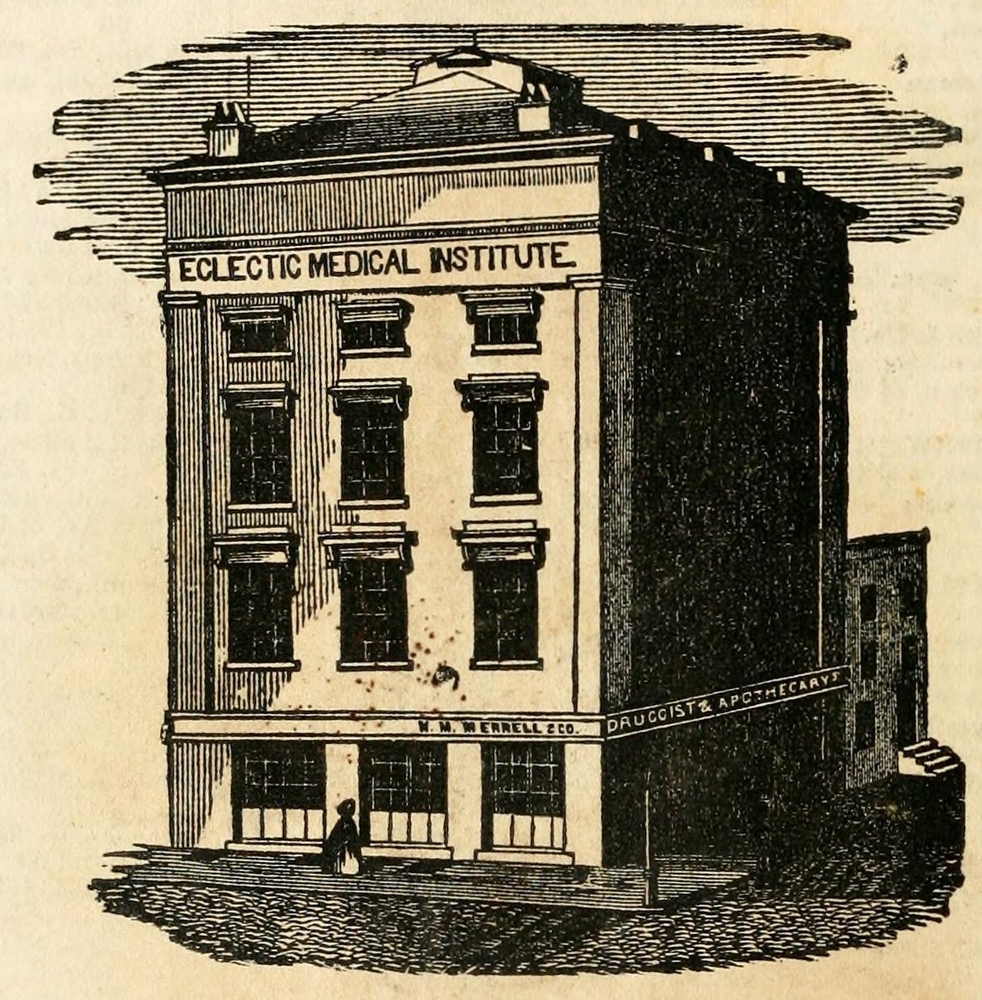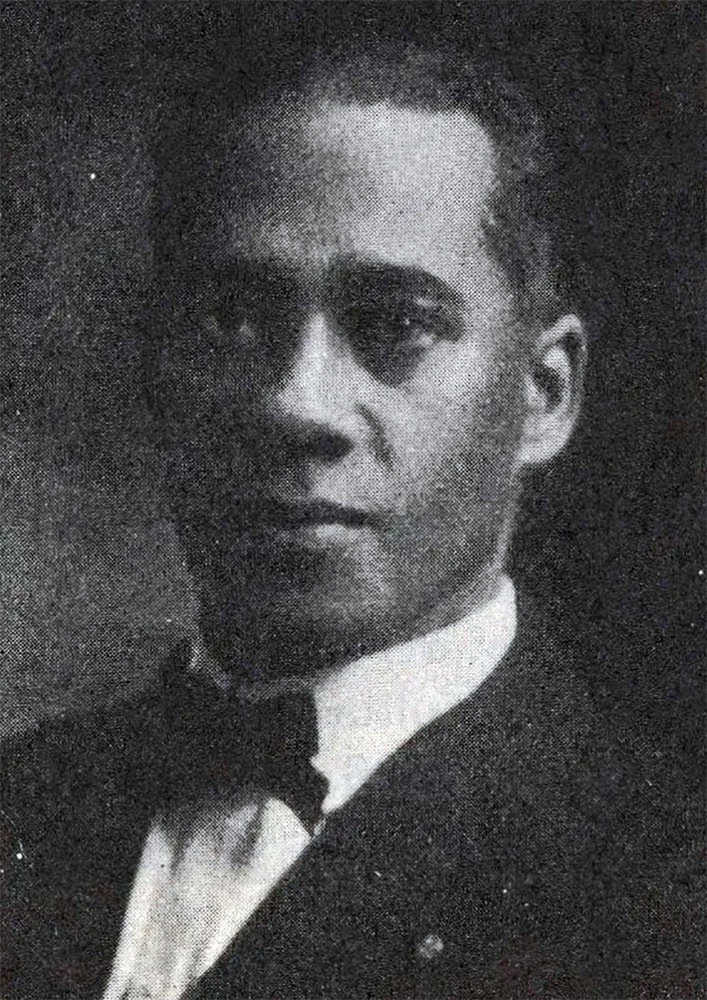Eclectic Medical Institute of Cincinnati
Medical College that Graduated Some of the Earliest Black Physicians in the US

The Eclectic Medical Institute of Cincinnati received its charter from the state of Ohio in 1845 and grew into the leading Eclectic medical school during the 19th century. Between its founding in 1842 and its final incoming class in 1939, EMI matriculated more than 7,000 students and conferred the degree of Doctor of Medicine to 4,668 graduates.
(Physician Constantine Samuel Rafinesque had coined the term "eclectic" to refer to physicians who employed whatever means they found to be beneficial to their patients, notably the use of medicinal plants, which he had learned through observing Native American peoples. Rafinesque's idea of Eclectic medicine spawned approximately 55 medical schools across the US during the 19th and early 20th centuries.)
Notably, EMI graduated some of the first female physicians in the United States. In 1854, Caroline Brown became the first woman medical school graduate west of the Allegheny Mountains. A Woman's Hospital was established in connection with the college in 1877, but it did not last long. The school conferred the MD degree on more than 125 women before it closed its doors in 1942.
Also notably, EMI graduated some of the first Black physicians in the United States, even though the school did not actively solicit Black students, claiming that "they can be better educated in institutions devoted exclusively to their race."
The Lloyd Library and Museum, founded by three pharmacist brothers whose work was associated with Eclectic medicine, contains the school's records and correspondence. John Uri Lloyd, the oldest of the three and a teacher at EMI, wrote a letter to Booker T. Washington in 1900 that apparently mentioned Black alumni of the school. The Lloyd Library does not have this letter in its archives, but it has Washington's response that thanks Lloyd for sharing this information.
William R. Reynolds of Illinois graduated in the class of 1868. According to John Uri Lloyd (but unverified), Reynolds was the first Black physician in the US.
Clifford J. Hickman graduated from EMI in 1889, and his brother Benjamin Jr. graduated approximately in 1891. Their father, Benjamin Hickman, Sr., was for 30 years the janitor at the school.
On 7 Jun 1890, the Cleveland Gazette mentioned that "Dr. Clifford Hickman [...] was the first Afro-American to graduate from the Institute. The second was Dr. Horace W. Conrad, of Louisville." A Cincinnati Commercial Gazette published the next day confirmed that Conrad also graduated that same year.
According to Wendell Dabney, "Doctors Ben and Cliff Hickman were the first graduates of the Eclectic Medical College. Dr. Kerr, who graduated third, is the only one of that trio living." This may be Dr. William A. B. Kerr, who died in Cincinnati in 1927 and is buried in Spring Grove Cemetery.
Charles W. Beaman of Jefferson, Missouri transferred to EMI from the Howard University Medical School in 1898, graduating in 1903. After years in private practice, Dr. Beaman returned to his alma mater, serving as the school's treasurer, faculty mentor, and as a secretary to the Board of Trustees. Aside from the Howard registrar's records, none of the bibliographical sources on Beaman mention the time he spent there. There is speculation that Beaman chose to 'pass' into white society.
In 1892, James T. Broadnax of Augusta, Georgia transferred to EMI from Meharry Medical College, an HBCU in Nashville. He supported his education by working as a janitor's assistant at the college and graduated in 1904.
Philadelphia native John R. Moore graduated in 1906.
Charles E. Horner of New Park, Kentucky in 1907. After passing the Kentucky State Medical Board examination in 1910, Horner became the first Black medical doctor to practice in Newport, Kentucky.
During the early 20th century, shifting immigration patterns influenced incoming student demographics. In response, colleges began to institute a system of admissions quotas, including pointed questions about birthplace and religious affiliation. Through thinly veiled antisemitism and xenophobia, schools in the Northeast were able to decrease enrollment by Orthodox Jews from Southern and Eastern Europe from upwards of half of their entering classes, down to 12% by the beginning of World War II.
Here again, EMI's record proves notable. Like other schools, its application started requesting more information, including race, nationality, religion, birthplace, and a photograph. However, between 1925 and 1939, students whose families "had come from Italy, Romania, Poland, Russia, and Yugoslavia, and observed a more traditional orthodoxy [...] averaged 44.2% of each of EMI's graduating classes."
Medical Eclecticism slowly met its demise as a result of shifting perspectives on professional medical practice and the standardization of medical education in the US. As a result, the Eclectic Medical Institute of Cincinnati (it had actually been renamed the Eclectic Medical College in 1910) permanently closed its doors in 1942, having provided educational opportunity to members of groups who were not always welcomed elsewhere.
The school occupied several downtown Cincinnati locations: the former Hay Scales House on the corner of 6th and Vine Sts., then a house on 3rd St. and the Fourth Street Hall. A purpose-built structure was erected in 1846 on the northwest corner of Court and Plum Sts. In 1870, a fire partly destroyed the building, and a new one was erected the following year.
Images

